
Inspiring Germany
10 regional traditions: mysterious, lovely, eerily beautiful
Quite a few regional traditions and celebrations are Celtic in origin, many of them are Christian, some celebrate Spring time, while others observe the 'in-between world'. What unites many is their ongoing allure, which has endured to this day. This is expressed through costumes, jewellery and sociable gatherings – whether that is at the fire, in nature or in the streets.
'Biikebrennen': an ancient bonfire tradition at the North Sea
The traditional North Frisian custom dating from the pre-Christian era is still around today. Bonfires burn on the 21st February at around 60 coastal and island locations between Tönning and Sylt. In the weeks before, old Christmas trees and other wood is stacked up. However, the fact that this blazing celebration was incorporated in the Intangible Cultural Heritage Lists in 2014 was also down to its 'accompanying rituals', which range from fireside speeches, to the torchlight procession and enjoying a meal together where kale is the main feature.
Shrovetide: jesters, witches, fantasy figures
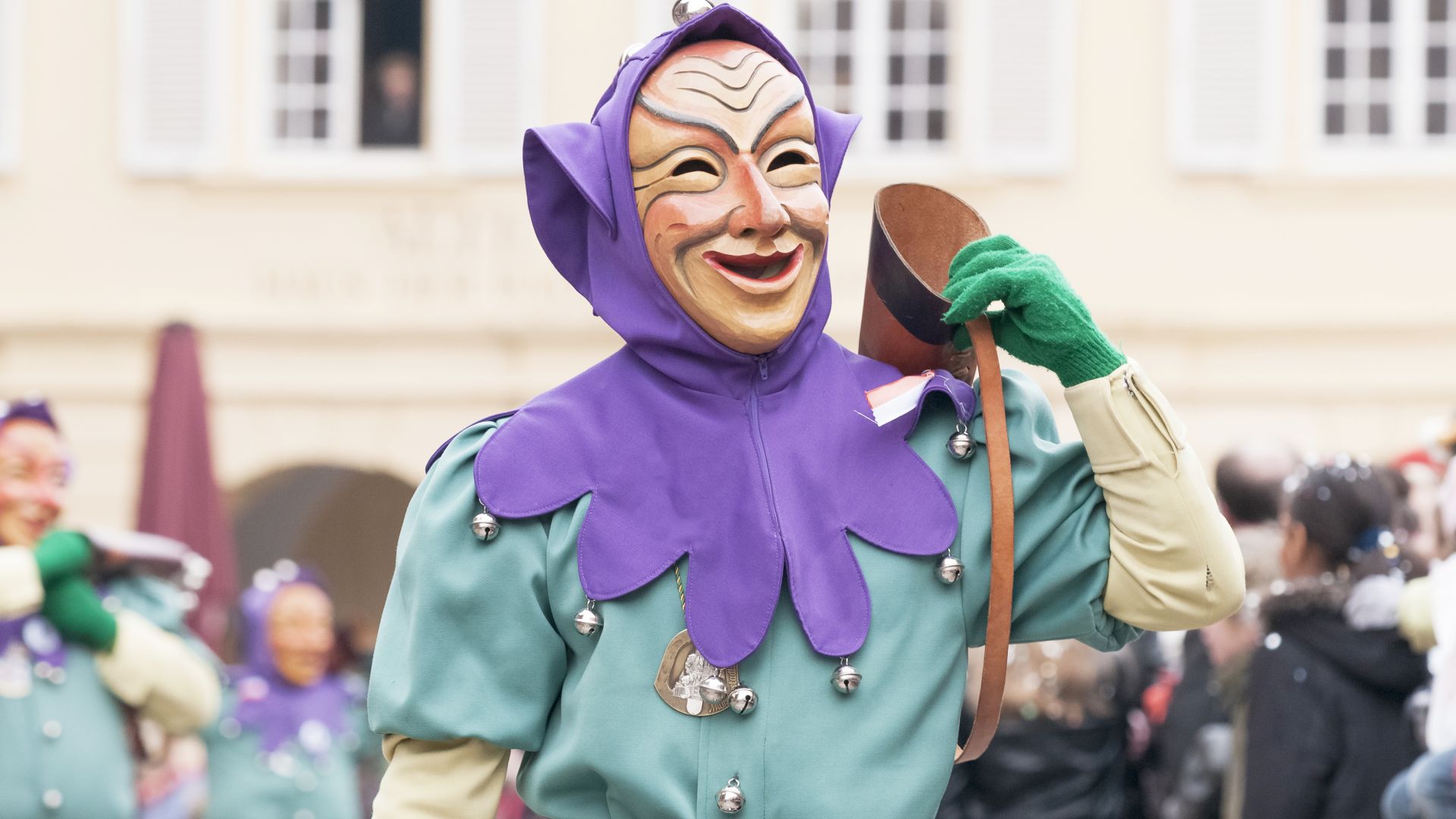 Disguised person at the carnival parade
©Adobe Stock (C. Schüßler)
Disguised person at the carnival parade
©Adobe Stock (C. Schüßler)
While Carnival is mainly celebrated in the Rhineland and is characterised by loud parades and carnival speeches, Shrovetide, which is celebrated more in southwestern Germany, is considered somewhat more traditional and mystical. In the Swabian-Alemannic variant, during this 'fifth season', lots of witches, devils, jugglers and other fantastical figures intermingle with the crowds during the processions, behaving mischievously. However the general mood here is decidedly relaxed.
Easter fountains: colourful eggs, magnificent garlands
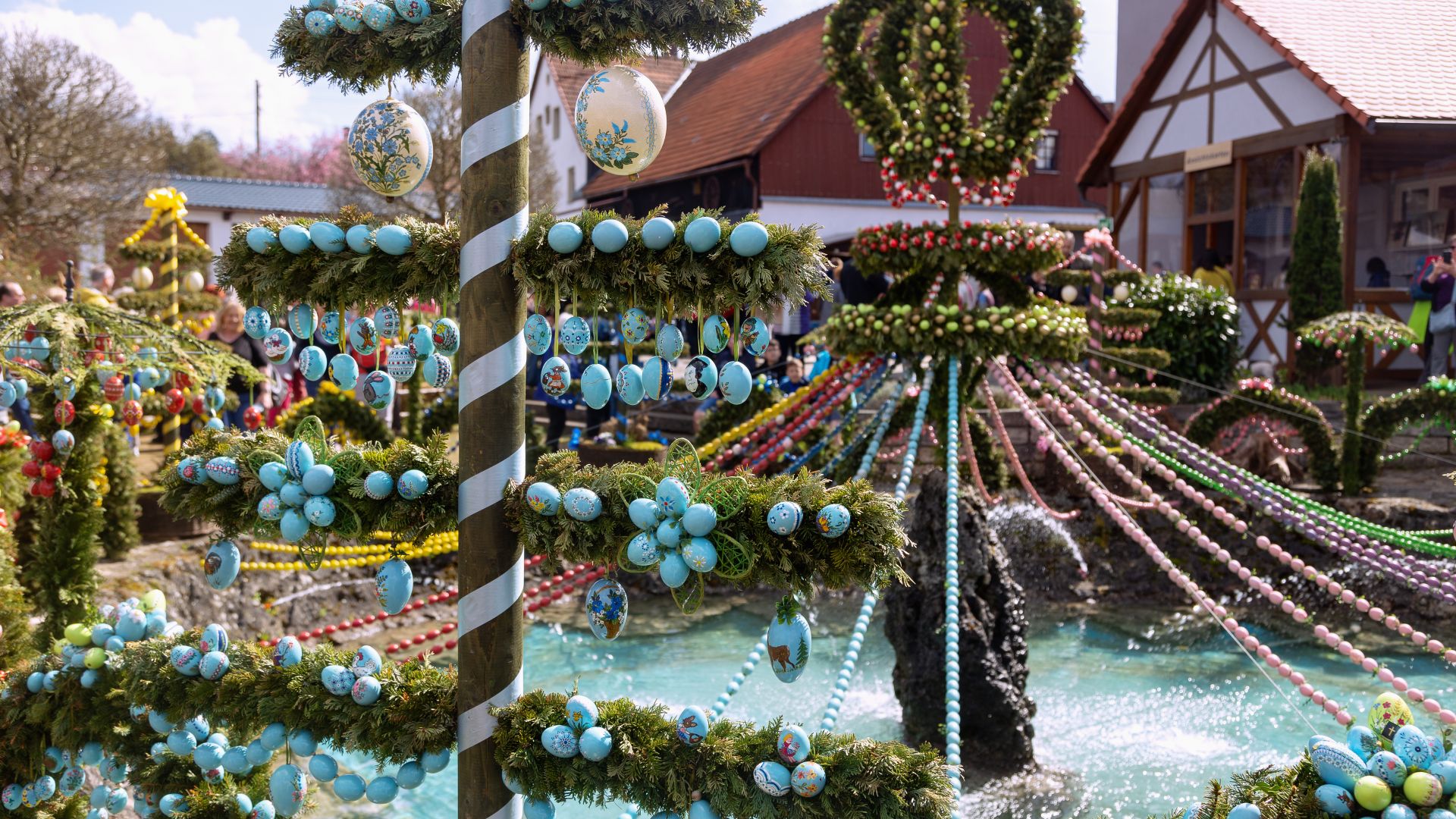 Largest Easter fountain in the world in Bieberbach
©lookphotos (Hanna Wagner)
Largest Easter fountain in the world in Bieberbach
©lookphotos (Hanna Wagner)
With 11,108 hand-painted egg shells, Bieberbach in Egloffstein has been entered into the Guinness Book of Records as having the 'largest Easter fountain in the world'. Indeed, in around 200 other towns in Franconian Switzerland in the weeks around Easter time, fountains are transformed into true works of art. The custom of decorating public water fountains with eggs, garlands and flowers and painting them in vibrant colours is said to welcome in Spring – and brings together visitors and locals, tradition and craftsmanship.
Walpurgis Night: when the devil revels in Harz
In Goethe's 'Faust' and quite lot of other tales and legends, witches, spirits and mysterious figures play a key role as they get together on the Brocken mountain on the last night of April. Witches riding on broomsticks and the devil's cult around the highest mountain in the Harz inspire the imagination to this day. The Walpurgis Night is celebrated in more than 20 towns – notably in Thale, Braunlage and Schierke – with witches' markets, devilishly good costumes, music and fire. And plenty of horror-filled tales.
'Tonnenabschlagen': a very special equestrian competition
This custom celebrated on the coast of Mecklenburg-Vorpommern has, since 2016, been part of Germany's Intangible Cultural Heritage – yet its history, of course, dates back far longer. For around 250 years, to be precise, riders (including female riders, since 1950) have galloped towards a herring barrel adorned with oak leaves, hanging high up above the track. The person who smashes the rods or the entire barrel to the ground, is crowned king. The greatest display of this kind takes place in Fischland-Darß-Zingst, but other Baltic Sea resorts organise similar folk festivals.
Heather blossom festival: a purple party
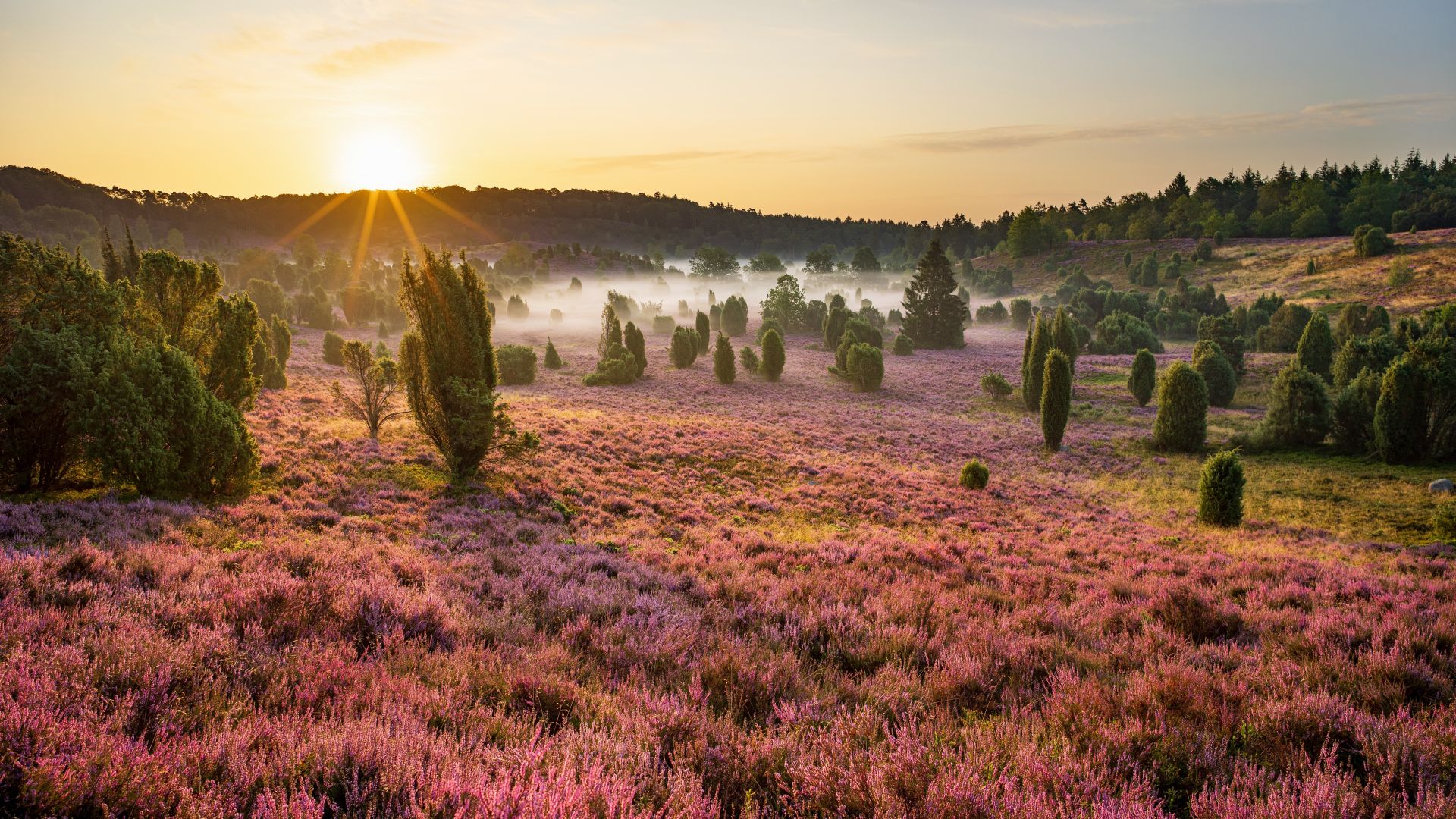 Sunrise at Totengrund in the Lüneburg Heath
©AdobeStock (RuZi)
Sunrise at Totengrund in the Lüneburg Heath
©AdobeStock (RuZi)
In late summer, when Lüneburg Heath rolls out its extensive purple flower carpet, the region celebrates too, with a no less colourful programme of events. In Amelinghausen, Schneverdingen and Holm-Seppensen in particular, there is a fair bit happening for days: concerts, laser shows, lantern processions, rustic-cosy 'Heidjer evenings' as well as guided hikes and cycle tours in the natural surroundings. The high point is the crowning of the new Queen of the Heather, followed by the celebratory procession.
Alpine cattle drive: pretty animals, chic people
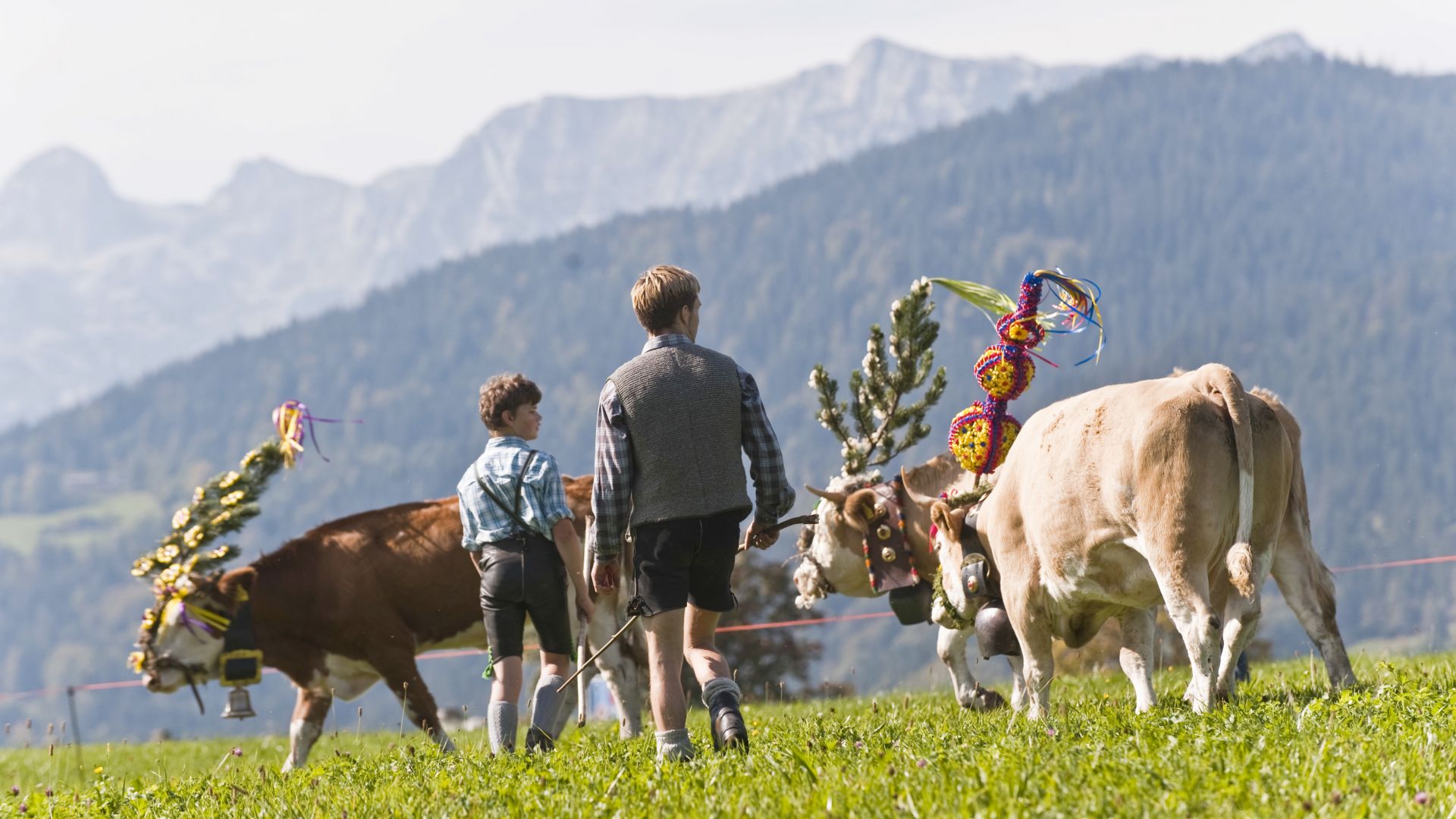 Berchtesgadener Land: Almabtrieb at Königsee
©www.bayern.by (Peter von Felbert)
Berchtesgadener Land: Almabtrieb at Königsee
©www.bayern.by (Peter von Felbert)
What happens when summer is over? One answer, which the Bavarian Alps frequently provide, is: that's when the animals return to the valley from the Alpine pastures, to spend winter in their barns. And this procession is celebrated with the cattle in particular being 'garlanded' – that is, spruced up to look magnificent in flowers, garlands and bells. During the festivities, where there are all kinds of delicious treats and artisan crafts, quite a number of locals dress up too, in costumes traditional of the region.
St. Martin's Day parades: a sea of lights for a greater sense of charity
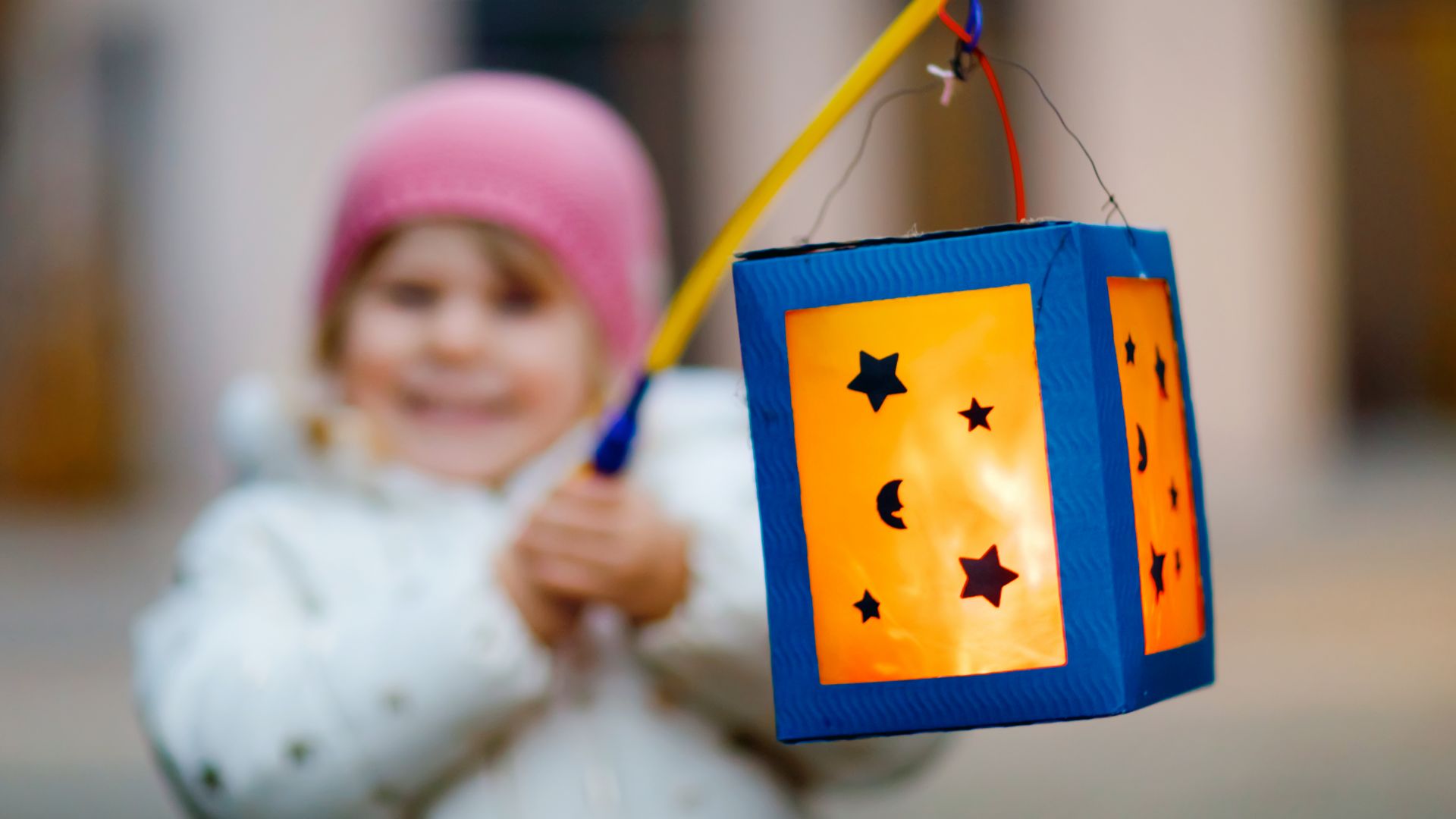 Lantern for the St. Martin`s procession
©Adobe Stock (Irina Schmidt)
Lantern for the St. Martin`s procession
©Adobe Stock (Irina Schmidt)
While carnival participants celebrate 'silly season' on 11th November, children in kindergartens and primary schools celebrate St. Martin's Day. The most important item: homemade lanterns, which they then use to walk through the town singing and drinking hot squash. The processions feature a person dressed up as St. Martin, who rides ahead of the main group and, as a gesture of charity, shares their coat – and some of these events are huge. For instance in Worms, Kempen and Bocholt, up to 8000 participants gather (adults too).
'Buttnmandl': frightening creatures dressed in fur and straw
On 6th December, right across Germany, St. Nicholas drops by to see lots of children and reward them with gifts (and to scold a few too). In Upper Bavaria's Berchtesgadener Land , this lovely gentleman is accompanied by 'Buttnmandln' – fear-inducing figures wrapped in straw and fur pelts, carrying large bells. Their job: to drive away evil spirits and demons. While local people enact this noisy spectacle somewhat privately, only the mountain people's 'Buttnmandllauf' is open to the public.
'Raunächte': between magic and superstition
These twelve nights between Christmas and Epiphany have a long time been influenced by a mysterious atmosphere. In Baden-Württemberg in particular and Bavaria, this tradition is alive and well. In this period 'in between the years', traditions practiced still to this day include the burning of 13 wishes written on a piece of paper and lighting herbal candles and incense blends to rid house and farm of bad energy. In a few regions, witches in costumes and 'Perchten', figures from Alpine folklore, also assume this task.